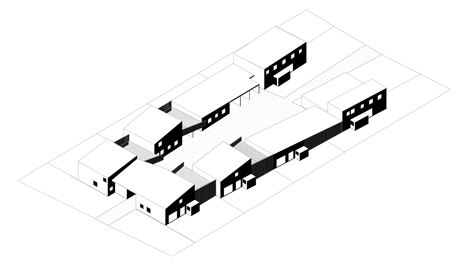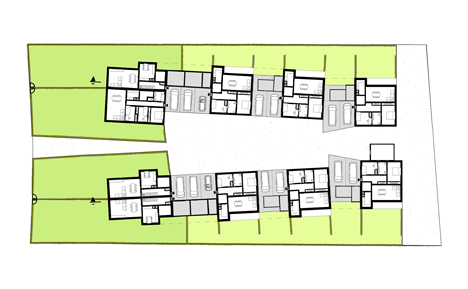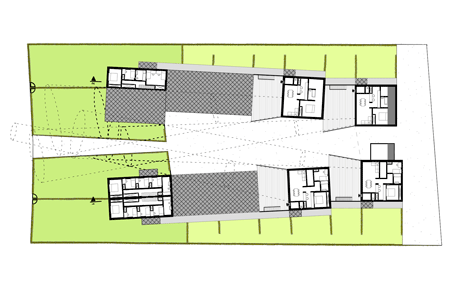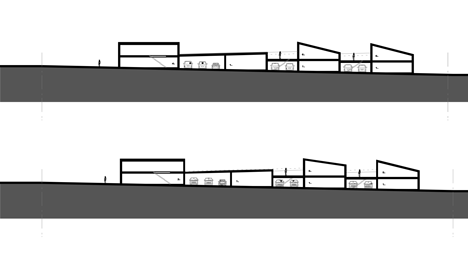Volt Architecten's Belgian housing scheme is designed to look like a farmstead
This social housing development in Zingem, Belgium, responds to its location between a busy road and an agrarian landscape with a "ranch-like" arrangement of buildings framing a central courtyard (+ slideshow).

Designed by Ghent firm Volt Architecten, the Ouwegemsesteenweg development is named after the road it is situated on, which connects three small villages with a nearby motorway.
The complex comprises 14 social housing units, including small apartments, family homes and accessible units for elderly people and people with disabilities.
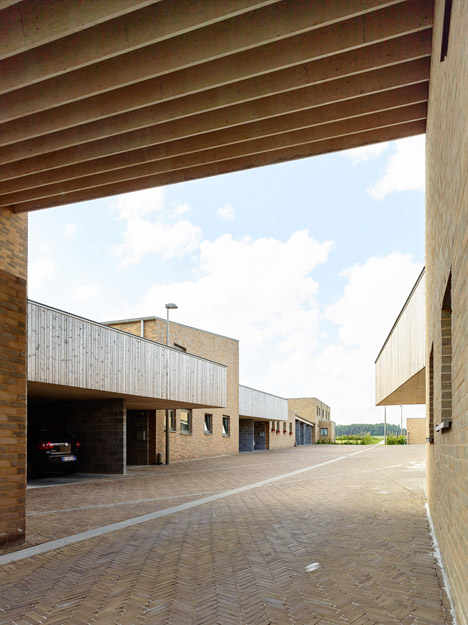
As with the majority of properties that stretch along this road, the design of the development focuses on reducing noise and views of the road while celebrating the site's proximity to the nearby farmland.
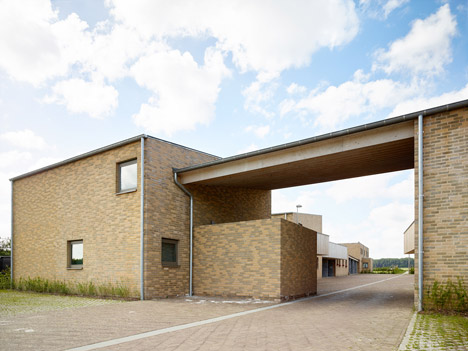
"Building on this kind of plot made us think about the right typology," architect Steven Verbeke told Dezeen. "In one way it is a rural site, but it is also situated alongside an important local traffic road, which condemns the project to become part of the typical ribbon development."
"As we did not want to end up with an allotment of single houses we came up with this hybrid of agricultural architecture," he said.
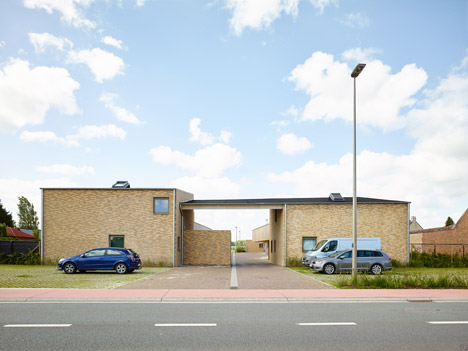
The team based the scheme's arrangement on the layout of typical farmsteads, with a gated entrance opening onto a courtyard flanked on both sides by structures of varying proportions.
"The ambition was to give it a ranch-like character that is more appropriate to its rural situation," Verbeke added. "We hoped to incite a more spontaneous, shared use of the central space and the car-port spaces, hence the use of simple materials such as brick, wood and concrete blocks."
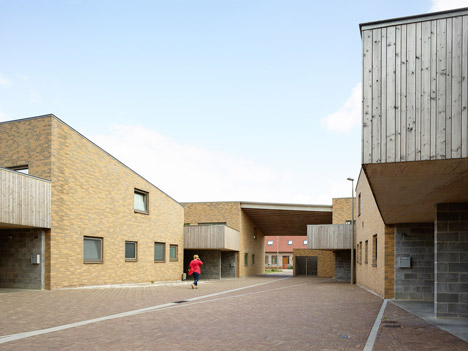
Residences are arranged along either side of the courtyard, with covered car-parking spaces and storage areas incorporated in between so the building appears as a single unit. The car ports are topped with timber boxes that form terraces for the dwellings above and also provide sheltered patio areas.
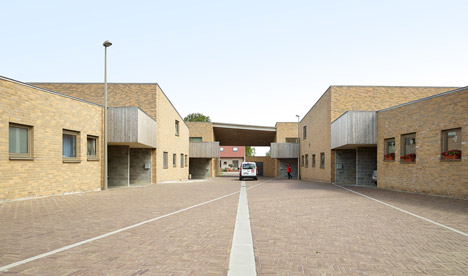
Entrances to the homes are situated in the car ports, concealing them from the view of anyone on the road or in the courtyard. This makes it difficult to discern how the buildings are divided up into separate units or how large each unit is.
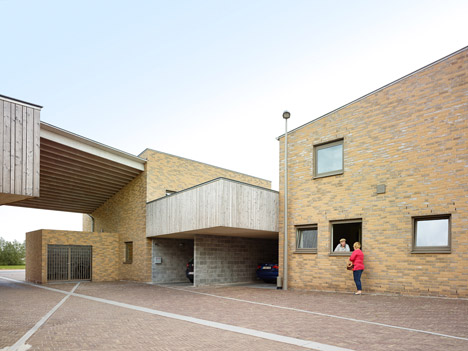
"We wanted to present the housing scheme as one image," said Verbeke. "From the main road it should be read as one building, not clearly showing the number of houses that are included. By adding the main gate we added a scale that overrules the scale of the single house."
The staggered heights of the buildings mean occupants are able to enjoy views of the surrounding countryside without overlooking one another. The layout ensures that every property features either a garden or a roof terrace, as well as an individual parking space and bike storage.
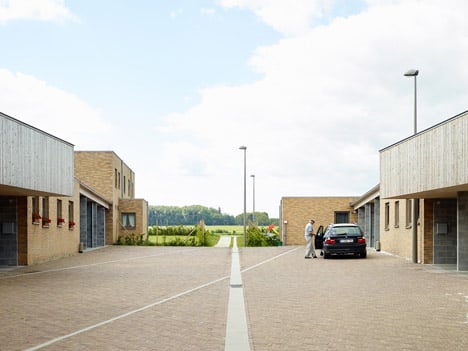
The gate frames a view through the centre of the development towards the fields behind, which is partly restricted by a bike shed that juts out on one side.
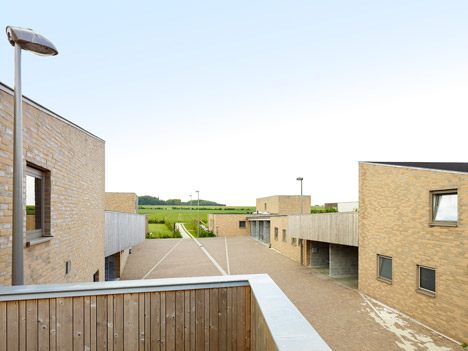
"The gate itself frames a new look towards the landscape," Verbeke said. "By joining the ribbon development we hide the landscape, and by emphasising the view and passage towards the landscape we present this hidden image in a new way."
"The gate also functions as a threshold between the traffic road atmosphere and the countryside atmosphere; you almost expect the traditional guard dog to inhabit the bike shed under the gate"
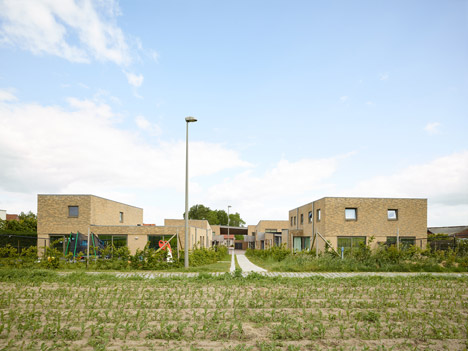
A line of paving beginning at the gate traverses the brick courtyard and connects at the far end with a traditional Flemish cobblestone road that runs perpendicular to the rear of the site.
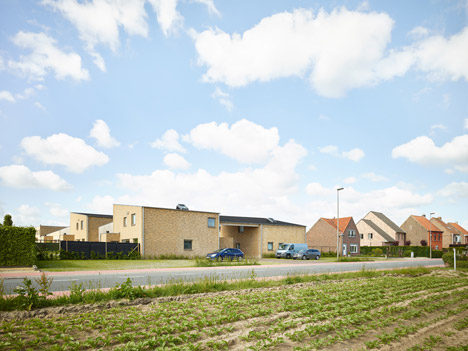
The irregular height of the facades and the modular arrangement of the structures means a two-metre gradient from the front to the back of the site is maintained without the need for retaining walls or excessive excavations.
Photography is by Dennis De Smet.
